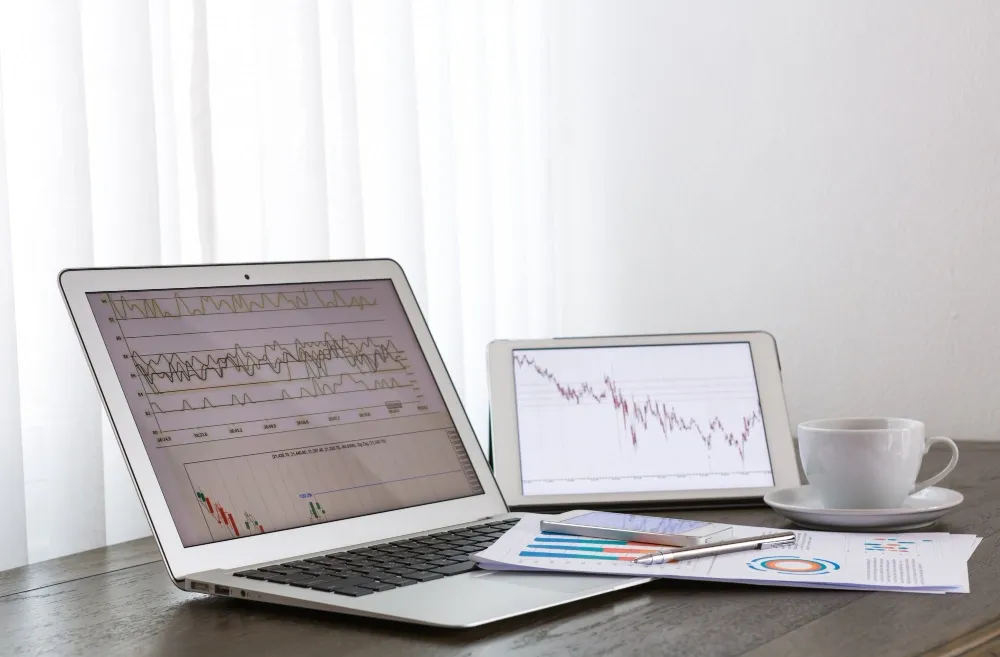Swing trading bridges the gap between day trading and long-term investing. It aims to capture medium-term price movements that play out over several days or weeks — appealing to traders who want flexibility without the stress of intraday trading.
This guide explains what swing trading is, how it works, its top strategies, and how it differs from day trading.
What Is Swing Trading?
Swing trading is a trading style focused on profiting from short- to medium-term price swings in stocks, ETFs, or other assets.
Swing traders hold positions for several days or weeks, seeking to capture a portion of an existing trend rather than long-term growth.
Unlike day traders who close positions before the market ends, swing traders hold overnight to benefit from broader moves — but still avoid the long holding periods of investors.
The goal is to ride momentum while minimizing exposure to daily market noise.
How Swing Trading Works
Swing traders rely mainly on technical analysis to identify entry and exit points. They use daily and weekly charts to find setups such as breakouts, pullbacks, or reversals.
A typical swing trade involves:
- Spotting a clear trend or pattern.
- Entering at a favorable price with a defined stop-loss.
- Holding for several days as the trend develops.
- Exiting when the price hits a target or stop level.
Common indicators include:
- Moving Averages (MA): Identify trend direction.
- Relative Strength Index (RSI): Highlight overbought or oversold levels.
- MACD: Confirm momentum shifts.
- Support & Resistance: Determine logical entry and exit zones.
Traders also monitor catalysts like earnings reports, economic releases, or sector rotation to refine their timing.
Swing Trading vs Day Trading
Both swing and day trading involve active management, but they differ in pace and approach:
| Aspect | Swing Trading | Day Trading |
|---|---|---|
| Holding Period | Days to weeks | Same day only |
| Time Commitment | Moderate | Full-time |
| Chart Type | Daily / Weekly | Intraday (minutes / hours) |
| Trade Frequency | Few trades | Many per day |
| Volatility Risk | Lower | Higher |
| Best For | Part-time traders | Full-time traders |
In short, swing trading prioritizes patience and strategy, while day trading focuses on speed and precision.
Popular Swing Trading Strategies
1. Trend Following
Buy during an uptrend or short during a downtrend, using moving averages or trendlines for confirmation.
2. Breakout Trading
Enter when price breaks above resistance or below support on high volume — often signaling the start of a new move.
3. Pullback Trading
Wait for a temporary dip during an uptrend (or bounce in a downtrend) before entering in the direction of the main trend.
4. Range Trading
Buy near support and sell near resistance in sideways markets with predictable price oscillations.
5. Reversal Trading
Look for signs of trend exhaustion, such as divergence in RSI or declining volume, to capture early reversals.
Advantages of Swing Trading
- Flexibility: Doesn’t require all-day monitoring.
- Balanced Risk-Reward: Targets steady gains with defined risks.
- Applies to Many Markets: Works for stocks, ETFs, and commodities.
- Less Stressful: Fewer trades reduce emotional fatigue.
- Compounding Growth: Profits can be reinvested into new setups.
Risks to Consider
- Overnight & Weekend Gaps: Prices may jump due to after-hours news.
- False Breakouts: Not all breakouts confirm trends; volume confirmation is key.
- Emotional Bias: Holding trades too long can lead to poor exits.
- Leverage Misuse: Using margin can amplify both gains and losses.
- Market Conditions: Swing trading works best in trending markets, not sideways ones.
Tips for Beginner Swing Traders
- Start with Liquid Stocks: Trade well-known names like Apple (AAPL), Microsoft (MSFT), or Nvidia (NVDA).
- Use Stop-Loss Orders: Protect your capital by defining exits in advance.
- Trade with the Trend: Avoid countertrend setups until you gain experience.
- Focus on Quality: Fewer, high-probability trades are better than frequent ones.
- Keep a Trading Journal: Record every trade to refine your approach.
- Combine Technical & Fundamental Insights: Use earnings and macro data to support technical signals.
Conclusion
Swing trading offers the best of both worlds — shorter-term flexibility with more manageable stress than day trading. It rewards traders who are patient, data-driven, and consistent in their risk management.
By combining solid analysis with discipline, swing traders can steadily grow their portfolios without being glued to screens all day.
Ready to explore swing trading in U.S. markets? With Gotrade, you can buy fractional shares of top companies and ETFs starting from just $1, giving you real-time access to global markets with ease.
FAQ
1. What is swing trading?
Swing trading involves holding positions for several days or weeks to profit from medium-term price swings within a trend.
2. Is swing trading safer than day trading?
Generally, yes. It involves fewer trades and less exposure to intraday volatility, though overnight risks still exist.
3. Can beginners try swing trading?
Yes. It’s suitable for beginners who can analyze charts, use stop-losses, and manage risk patiently.
4. What’s the best market for swing trading?
Highly liquid markets like U.S. stocks and ETFs are ideal because they offer predictable trends and manageable volatility.
Disclaimer
Gotrade is the trading name of Gotrade Securities Inc., which is registered with and supervised by the Labuan Financial Services Authority (LFSA). This content is for educational purposes only and does not constitute financial advice. Always do your own research (DYOR) before investing.




